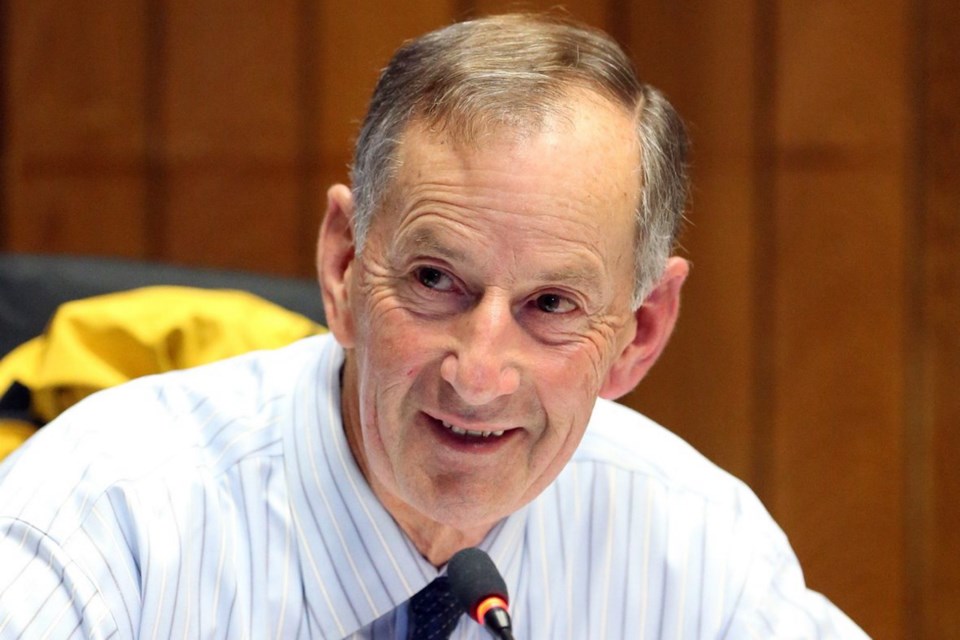With some kicking and screaming, Capital Regional District directors officially ceded control of the core area’s sewage-treatment program on Wednesday, reluctantly agreeing to terms to establish a new independent wastewater project board of experts to oversee the mega-project.
Several directors complained they were being asked to be financially responsible for a treatment plan that they will have no part in crafting.
Saanich Coun. Vic Derman called establishing the new board a “huge leap of faith” and said the province is now “controlling the agenda.”
“With all respect to the minister and what the minister wishes to say, the province is taking control of this project,” Derman said. “If someone comes to us and says I want your wallet and if you don’t give it to me I’m going to take my ball and go home, essentially, that limits choice.”
The CRD has been trying to come up with a plan for sewage treatment since 2006, when an environmental assessment of the seabeds around the outfalls found them to be contaminated. As a result, the province directed the region to put in secondary treatment.
After years of planning, the CRD got close to getting shovels in the ground two years ago with a proposed single regional plant at the site of a former tank farm at Esquimalt’s McLoughlin Point. That plan, with an estimated price tag of $788 million, was abandoned because Esquimalt would not approve minor zoning variances for the McLoughlin site and the province refused to override the decision.
That started a whole new round of technical and environmental studies, public consultation and site examination that seemed to point to Victoria’s Rock Bay as the preferred site for a regional plant. At the last minute, CRD directors shifted course and decided to test the public’s appetite for building two sewage-treatment plants — one to be buried under a park at Clover Point in Victoria and the other at either McLoughlin Point or Macaulay Plain in Esquimalt at an estimated cost of $1.13 billion.
The province stepped in this month. Directors agreed to establish the new board to oversee the project, following a private meeting with B.C. Community Minister Peter Fassbender. He told them to establish the project board or risk losing more than $500 million in federal and provincial funding.
Terms of reference for the new project board give it authority to undertake “all aspects of business case planning, site acquisition, project management and expenditures” for the project.
Victoria Mayor Lisa Helps, who has chaired the CRD sewage committee for the past year, said that through the terms of reference, directors were merely giving “some broad direction to an expert group.”
“We had our chance. We didn’t come up with anything. We don’t have time and here’s an opportunity to give this broad-based direction. … They’re going to take the volumes of work that we’ve done and come up with something for us. That’s what we need,” Helps said.
Prior to deliberations, board members heard from Tom Benjamin, vice-president of CUPE Local 1978, which represents CRD unionized employees. He said members are worried that the new “unelected project board” might allow operation of the plant to fall to the private sector.
The terms of reference called for the board to examine a range of project-delivery options, including public-private partnership models such as a “design-build-finance-operate-maintain model that would support innovation and the use of leading technologies.”
“CUPE has grave concerns about the terms of reference, which implies that all infrastructure may become a 3P,” Benjamin said. He noted that in the past, the CRD board has supported publicly owned and operated sewage-treatment and conveyancing systems and was only looking to a public-private partnership model for processing of sewage sludge, he said.
View Royal Mayor David Screech said he supports public ownership.
“I really do have concerns about the public-ownership piece of it. I just want to be on record as saying if this project board comes back with a recommendation that this be a private model, I’m going to have a really difficult time supporting that at the end of the day,” Screech said.
Directors revised the terms of reference to call for a review of a publicly operated and maintained delivery model as well as 3P models.
The new board, which is to be appointed by the CRD but whose composition has not been announced, is to consist of seven members, including CRD chief administrative officer Robert Lapham.



